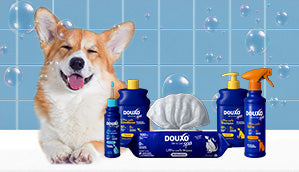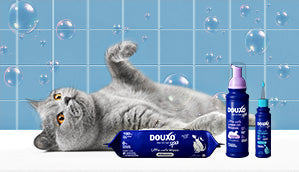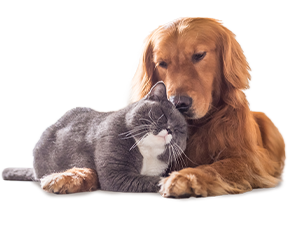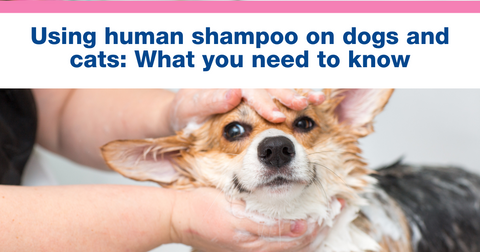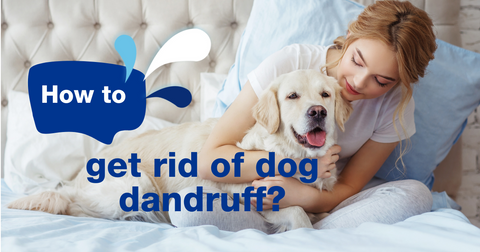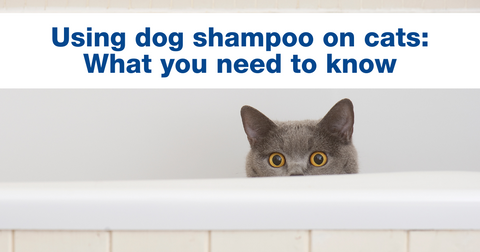
The dog who is always looking for warmth
Sometimes, the most innocuous of symptoms can be an early indication that all is not well. Many pet owners know their dogs so well that they can pick up on very early signs of disease, leading to rapid diagnosis and early treatment. However, some owners are hesitant about going to the vets if their dog’s symptoms seem vague or mild.
In many diseases, the symptoms might be quite non-specific. For example:
- Just a bit of dry skin
- Losing a little bit more hair than expected
- Their coat coming through patchily
- A tendency to get a bit chilly
- Slight changes in normal habits
- Subtle changes in weight.
None of these signs are particularly concerning but, pieced together, they can be highly suspicious and warrant further investigation. If you’re concerned about your pet – however small your concerns seem – always seek advice from a vet!

Possible causes of warmth seeking and skin changes? Think about the thyroid!
Dogs with low thyroid hormone levels cannot process their energy well, so tend to be slow, sleepy and cold. Here are some common signs:
- Dull, lethargic, ‘sleepy’, and low exercise tolerance
- Weight gain (without increased appetite)
- Heat-seeking behaviours, seeming cold often
- Coat and skin changes: dry and scaly skin, increased shedding of hair, hair thinning or loss (alopecia), especially symmetrically over the flanks
- Recurrent skin infections
In more severe cases, you may also see:
- Swollen face, leading to a ‘tragic look’
- Facial paralysis
- Muscle weakness
- Anaemia
- Altered heart rate and rhythm
What is an underactive thyroid?
Hypothyroidism is a medical condition where the thyroid gland fails to produce enough thyroid hormone (thyroxine). This thyroxine is responsible for controlling a dog’s metabolic rate, and so a lack of it can cause a range of symptoms.
Hypothyroidism is usually due to the cells in the thyroid gland that make thyroid hormones dying off – either due to a mistake by the immune system, or replacement with fatty tissue.
There is no known trigger or cause for this disease. Rarer causes of an underactive thyroid include an inherited condition mainly seen in Fox Terriers; and Secondary Hypothyroidism, where the thyroid gland is working fine but the signals from the brain aren’t reaching it.

What dogs can be affected?
It is most common in middle to large breed dogs, with Golden Retrievers. Dobermanns, Great Danes, and Irish Setters reportedly at increased risk) and often occurs between 4-10 years of age, with an average age of onset at 7 years.
That said, just because your dog is smaller doesn’t mean they can’t have thyroid problems – Miniature Schnauzers, Cocker Spaniels and Dachshunds are also at increased risk. In fact, it is one of the most common hormone disorders seen in dogs, affecting as many as 0.4% of all dogs.
How is it diagnosed?
Hypothyroidism is usually diagnosed using a blood test which measures the levels of thyroxine in the blood. Occasionally, dogs showing classic symptoms of a “low thyroid” will show up as normal on these tests, and your vet may recommend further blood tests to investigate their thyroid function more.
Living with a hypothyroid dog
A diagnosis of hypothyroidism isn’t a disaster! Fortunately, the condition can be very effectively managed.
-
Medical treatment
Treatment for this condition relies upon giving supplemental thyroxine hormone via tablet medication. Hypothyroidism is a lifelong disease which is managed, rather than cured, and so medication is usually given for life. Once the thyroid gland stops making thyroxine, we can’t make it start again – but we can “top it up” medically.
-
Topical treatments
Whilst awaiting full diagnosis and treatment, there are some ways to help minimise the effects associated with low thyroid levels. Many hypothyroid dogs have pronounced skin symptoms, especially dry skin, scaling and hair loss. Dry, scaly skin indicates that the skin is not at peak health. A poorly functioning skin barrier can also predispose dogs to skin infections, which can be sore and itchy. Superficial infections can also become deep and more serious.
Topical products like shampoos are really useful in these scenarios as they can relieve symptoms without interfering with diagnostic tests or treatment.
DOUXO® S3 SEB is usually the treatment of choice, as seborrhoea – oily, dry or flaky skin – is characteristic of dogs with hypothyroidism. While skin function will gradually improve once the thyroid imbalance is treated, earlier attention to the skin can relieve the symptoms much more rapidly. S3 SEB works at multiple levels to help manage the symptoms:
- Anti-dandruff effect, to help reduce flaking of skin
- Sebum control formula, to reduce the excessive production of skin oils
- A skin flora rebalancing action, helping to prevent bacterial overgrowth that can lead to skin infections. Combined with the hydrating effect and strengthening of the skin barrier, this can reduce the risk and the severity of skin infections.
Skin infections
In cases where skin infection is already established (seen in as many as 14% of all affected dogs), veterinary attention is required.
However, DOUXO® S3 PYO may also be a helpful adjunctive treatment, acting to:
- Reduce the bacterial count on the skin through an antibacterial action
- Knock down yeast numbers, by its related antifungal effects
- Hydrate and support the skin barrier, helping to protect the deeper tissues.
The process of diagnosis and treatment can take a little time. The dose of medication needed is variable between dogs, and it can take a few dose adjustments to get your dog onto the correct dosage for their individual need.

Hypothyroidism: a summary
- Hypothyroidism is caused by low production of thyroid hormone
- Low thyroxine causes a decrease to metabolic rate, leading to symptoms such as weight gain, lethargy, heat-seeking, hair loss and dry skin
- Diagnosis relies on blood tests and compatible symptoms
- Treatment is through lifelong medicating with artificial thyroid hormone
- Dermatological symptoms can be supported throughout diagnosis and treatment by using topical products to improve skin health, helping to prevent further damage and infections of the skin.
If you’re looking for more expert pet skincare tips, why not explore our other articles online? And don’t forget, you can also sign up to our newsletter to receive all the latest news straight into your inbox!





